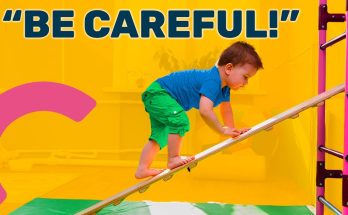For years, parents around the world have struggled to understand the cries and sounds their babies make. Every newborn seems to communicate in ways that often leave parents feeling helpless, trying to decipher whether their little one is hungry, tired, in pain, or simply uncomfortable. However, one woman claims to have unlocked the secret language of babies, a discovery that has transformed the way parents interpret their infants’ needs. This fascinating revelation was featured on The Oprah Winfrey Show, where the world learned how decoding baby sounds could lead to happier, more content newborns—and less stress for parents.
The Woman Behind the Discovery: Priscilla Dunstan
The woman who made this groundbreaking discovery is Priscilla Dunstan, an Australian woman with an extraordinary gift—an exceptional memory for sounds. As a child, Priscilla had a photographic memory for music and could recall complex musical pieces after hearing them just once. As she grew older, she realized that her unique ability extended beyond music; she could also detect patterns in sounds, including those made by babies.
Priscilla’s breakthrough came when she became a mother herself. She noticed that her newborn son made distinct sounds depending on his needs. As she listened more closely, she identified specific sounds that seemed to correspond with particular needs, such as hunger, discomfort, tiredness, and the need to burp. Intrigued by her findings, she spent years studying and testing her observations with babies from different cultures and languages, eventually developing what she called the Dunstan Baby Language—a universal set of baby sounds that all newborns make.
The Five Universal Baby Sounds
On The Oprah Winfrey Show, Priscilla introduced the world to the five sounds that babies make, each indicating a specific need. She explained that by recognizing these sounds, parents could respond more effectively, reducing crying and making both baby and parents happier.
1. “Neh” – I’m Hungry
Babies make the “Neh” sound when they are hungry. Priscilla explained that this sound is produced when the baby’s sucking reflex is activated, causing their tongue to push up against the roof of the mouth. Parents who recognize this sound can respond promptly with a feeding, preventing prolonged crying due to hunger.
2. “Owh” – I’m Sleepy
The “Owh” sound resembles a yawn and is a baby’s way of signaling that they are tired. It is created by the baby’s reflex of opening their mouth widely as they begin to get drowsy. Identifying this sound early allows parents to put their baby down for sleep before they become overtired and fussy.
3. “Eh” – I Need to Burp
Babies say “Eh” when they need to be burped. This sound is produced as the baby’s diaphragm tightens while trying to release trapped air. Recognizing this cue early can help parents burp their baby before they experience discomfort, reducing spit-up and gas-related fussiness.
4. “Eairh” – I Have Gas or Lower Abdominal Discomfort
When a baby has gas pain or digestive discomfort, they make a deeper, drawn-out sound like “Eairh.” This occurs when a baby tenses their stomach muscles in response to digestive discomfort. Parents who recognize this sound can take steps such as massaging their baby’s tummy or using gentle leg movements to help relieve gas.
5. “Heh” – I’m Uncomfortable (Too Hot, Too Cold, Wet Diaper, etc.)
The “Heh” sound indicates that a baby is uncomfortable. This could be due to a wet diaper, feeling too hot or cold, or even an itchy clothing tag. By recognizing this cry, parents can quickly check for possible causes of discomfort and address them before the baby becomes more upset.
Why This Discovery is Life-Changing for Parents
Priscilla’s discovery resonated with parents worldwide because it provided a concrete way to understand their babies rather than guessing what was wrong. Traditionally, many parents assume all crying means hunger, leading to overfeeding or unnecessary frustration. The ability to distinguish between these different sounds allows parents to meet their baby’s needs more effectively and reduce unnecessary crying.
On The Oprah Winfrey Show, Priscilla demonstrated the baby language with real infants, showing how each sound correlated with a specific need. Parents in the audience were amazed at how accurately her system worked. Many reported that after learning these sounds, their babies cried less, slept better, and appeared more content.
Experts also praised the Dunstan Baby Language as a revolutionary tool for parenting. Pediatricians and child development specialists noted that responding appropriately to a baby’s cues can strengthen the parent-child bond and foster better emotional development.
How Parents Can Learn the Dunstan Baby Language
Priscilla Dunstan went on to develop training programs, DVDs, and online resources to help parents learn to recognize and respond to their baby’s cues. The key to mastering this technique is listening carefully and responding promptly. New parents are encouraged to:
✔ Listen attentively – Spend time observing and recognizing these sounds in their own baby.
✔ Respond quickly – Meeting a baby’s needs early prevents them from becoming too distressed.
✔ Stay patient and consistent – It may take time to distinguish the sounds, but with practice, parents become more confident.
Final Thoughts
The discovery of the Dunstan Baby Language has been a game-changer for many parents, helping them navigate the challenging newborn phase with greater ease. By understanding these five universal baby sounds, parents can respond to their babies more effectively, leading to a calmer and happier household.
Priscilla Dunstan’s work has empowered parents worldwide, proving that babies do have a language of their own—and now, thanks to her research, we can understand them better than ever before.



